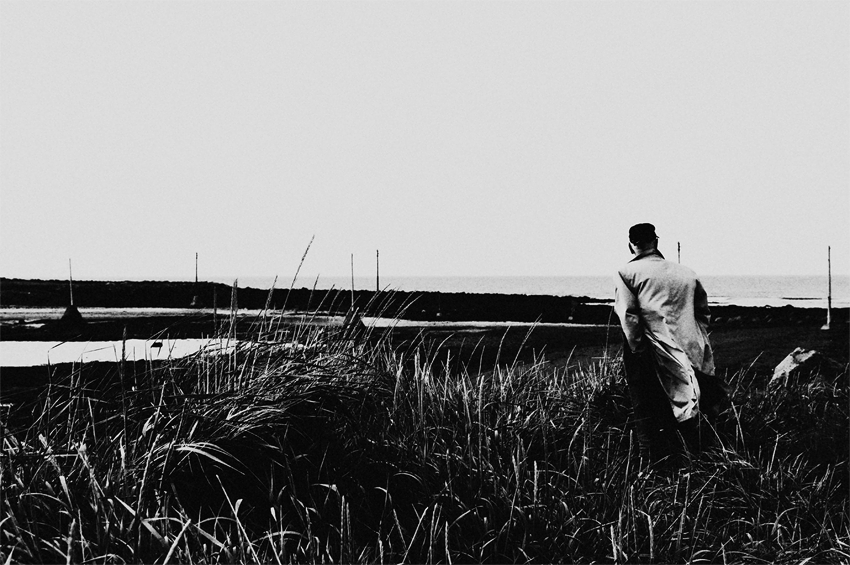Many years ago I read a book by Tove Jansson, entitled Moominpappa at sea (original title Pappan och havet, literally The father and the sea). In this book – I don’t remember if it’s the seventh or sixth in the Moomin series – Moominpappa all of a sudden becomes restless: his uneventful life in Moomin Valley is not satisfactory anymore; he feels great thirst for adventure that can only be extinguished by doing something out of the ordinary. He sets off on a journey with his family, reaching the desolate coasts of a barren Northern island only inhabited by strange presences. With the family, he starts living in an abandoned lighthouse whose former keeper has mysteriously disappeared leaving all his possessions behind.
Reading the story, I could identify terribly with Moominpappa’s unrest. Only I could not really picture the life in an abandoned lighthouse on a weather-beaten island. The image I had of lighthouses came from the vague experience with photo-books and postcards or with interior design magazines my mother used to buy as “bathroom literature”. Most of the images shown in those magazines were about sunny spots in very Mediterranean-like environments: the external structure of the lighthouse was often surrounded by opulent vineyards or exaggeratedly colorful gardens; the interiors were always cheerfully decorated with expensive taste and flooded through the opened windows by a blinding sunlight. In brief, the perfect stereotype of Southern luxury for casual daydreamers, not at all the idea an adventurer would have of the same subject. All these representations of life in a lighthouse were far from conjuring the mysterious atmosphere Jansson created describing Moominpappa’s lighthouse in the gloomy Northern island in the middle of nowhere, where flowers can’t bloom no matter how hard Moominmamma tries, and ghosts lurk at night. The idea I got was places like that cannot actually exist; they are just fictional fabrications and so is the fascination they arouse.
Of course time and experience proved me wrong. Not all world is shaped after photos printed in magazines and not everything is pictured in postcards you buy at the tourist shop. Reality is by far richer and more enthralling than the stereotypes conceived for the weak imagination of the average public.
The North of the world is full of the magic described in Tove Jansson’s stories. Take Iceland, for instance. After all, don’t forget we are writing about Iceland. Iceland’s lighthouses fit perfectly the description in Jansson’s book. They have the disquieting aura most of the lighthouses of glossy magazines people like to read lack. No vineyards are surrounding the smooth walls stretching skywards, no exotic gardens covered in roses and begonias to anaesthetize the sense of sight. The sun kisses now and then the lonely cliffs and beaches, but the wind does it as well, and with a berserk passion that is unknown to other shores. No easy exoticisms are possible; no opportunity to embrace the solitude with the cowardly smile of the undecided. Everything is stark, deprived of the extravagances so dear to the mild-hearted onlooker. The only recognizable forms are those of the seagulls against the sky and the only sound is the cry of the birds and of the enraged sea.
Not very far from where we live in Vesturbær, there is a little island called Grótta, which is located in the Seltjarnarnes township. It’s amazing how a place like this can exist so close to the Reykjavík city center. Anywhere else it would be crazy only to think about it. But in the Reykjavík area you don’t really have to walk much to find yourself all of a sudden surrounded by nature and its beauties. Grótta is mainly renown for its ornithological value. Several species of birds every year choose Grótta for nesting, and during some months of the year the whole area is bustling with life. If you’re not careful enough, you can easily become an intruder and be attacked by feathered creatures incited by your presence. Leaving aside these perils, Grótta is not only famous for its bird population. It hosts in fact one of the many Iceland’s lighthouses still active in the country.
Gróttuviti (literally, Grótta’s lighthouse) and its reclusiveness are exemplary. So close to the mainland but at the same time so unapproachable. The white concrete walls of the lighthouse and the tiny keeper’s houses close to them look terribly remote in the high tide. Gulls and other wild birds encircle while flying the small island in its entirety, giving the spectator, especially in times of bad weather and untameable wind, such an impression of poignant desire for adventure that it’s almost impossible to describe with just a few banal words. Moominpappa’s lighthouse, with its melancholic mood, must have looked a little like that, I’m sure.
Gróttuviti, so close now to the urban area that it has probably lost over time part of its original intense fascination, is just one of the few examples of how Iceland can be captivating in the eye of the visitor. Its elusive unsophisticated beauty must be experienced in the right mindset though.


According to the Íslenska Vitafélagið (the Icelandic Lighthouse Society), the first lighthouse was built in Iceland in Valahnúkur, on the South-West coast, in 1878. Just a few more lighthouse structures were completed before the XX century. Iceland’s lighthouses count includes 104 lighthouses. Most of them to this day are still active.
View Lighthouses of Iceland – Gróttuviti in a larger map